Make Sushi Like a Pro with the Right Knife!

Contents
What Is Sushi?
Sushi is the most popular Japanese dish known worldwide and promoted by a large number of specialized bars and restaurants. The exotic taste of sushi makes it an irresistible delicacy that millions of people enjoy.
The base of sushi consists of cooked rice with Japanese vinegar, wrapped together with fish, avocado or vegetable. There are many types of sushi:
Maki - rice with fish wrapped in seaweed, the roll is cut into bite-size pieces.
Nigiri - long and thin sushi made of rice, served with a slice of raw fish or seafood.
Sashimi - raw fish, served in long rectangular slices, it is often served with soy sauce and wasabi.
Temaki - rice with fish or vegetables rolled into a cone shape.
Strong and Flexible Blade Needed
The length of the sushi knives should be 30 cm and more. In most cases, sushi knives are double-edged with a V-shaped edge. The blade is very sharp so as not to crush or tear the structure of the sushi rolls.
Common kitchen knives in your kitchen drawer usually do not meet these high requirements. Sushi chefs only use tried-and-tested tools delivered from Japan that meet the demanding quality criteria.
Even if you don't prepare sushi every day, it's worth investing in a sushi knife because you can also use it to cut other types of meat and vegetable. Sushi knives will do the same job as, for example, filleting knives or vegetable knives, and those knives are must-haves for every chef.
Go for Japanese Knives
Preparing your own sushi at home is possible with just a little bit of practice! The key to good sushi is quality ingredients, especially the right type of rice. You might also need to read through the recipe and the individual steps carefully, pay attention to how to roll and slice the rolls correctly. Another essential ingredient of success in sushi preparation is a sharp sushi knife.
Sushi is growing in popularity and there are plenty of knives on the market designed for the preparation of this Japanese treat. When choosing a sushi knife, always check for the country of origin. The best sushi knives come from Japan, where sushi has the longest tradition.
High-quality Japanese knives from our shop will turn sushi preparation into a child's play as well as pleasure. Additionally, they will be useful for filleting fish or slicing meat into thin slices. Their long and narrow blade can cut sushi rolls very easily.
Do you know that sushi...
- contains vitamins A, B2, D and E?
- literally means ‘sour rice’?
- can be eaten with your hands or chopsticks?
- prevents vascular diseases?
- supports brain growth and function?
- could originally only be prepared by men?
Special knives called Sashimi or Yanagiba will make the preparation of sushi easier. There are different ways of cutting sushi rolls, but you can always pull the knife towards you while gently pushing it downwards onto the board. No hard pushing involved. A clean cut of the sushi rolls is only possible with an extremely sharp knife. If your knife is blunt, you will crush the roll.
How to Safely Use an Extra Sharp Knife?
Hold the bottom of the blade between your index finger and thumb, and grasp the handle with the other three fingers. The correct grip is crucial for the clean cut. Pay attention to the length of the blade, the longer the knife is, the more difficult it is going to be to use safely. Most injuries are caused by blunt knives, because you have to exert more strength and push much harder, which results in the knife slipping and cutting your fingers. A bad grip can also result in injuries.
Practical Tips for Cutting Sushi Rolls
- Before cutting a sushi roll, sharpen the edge of the blade slightly, polish the blade with a sharpening steel and wash it. Read our guide on how to sharpen your knife.
- Be careful, though. An extremely sharp knife like this is a highly dangerous tool, so use it with the utmost care and make sure there are no distractions.
- It's easier to cut when the blade is wet.
- Slice the rolls while hot, before the rice gets cold.
- Estimate the center of the roll and slice cleanly through it using the sharp knife. Continue cutting the roll in the middle until you have achieved the desired size.
- If your knife is sharp, should only take one slice to divide the roll.
- Clean the blade after each cut by dipping it into a bowl of water. This cleans the bits of sushi that might stick to the blade after each cut.
Fancy some homemade sushi? You already know by now which sushi knife you need to make perfect sushi. If you want to learn even more about Japanese knives, read our article dedicated to sushi knives! Get the right ingredients and you are all set to bring Japanese cuisine into your home!

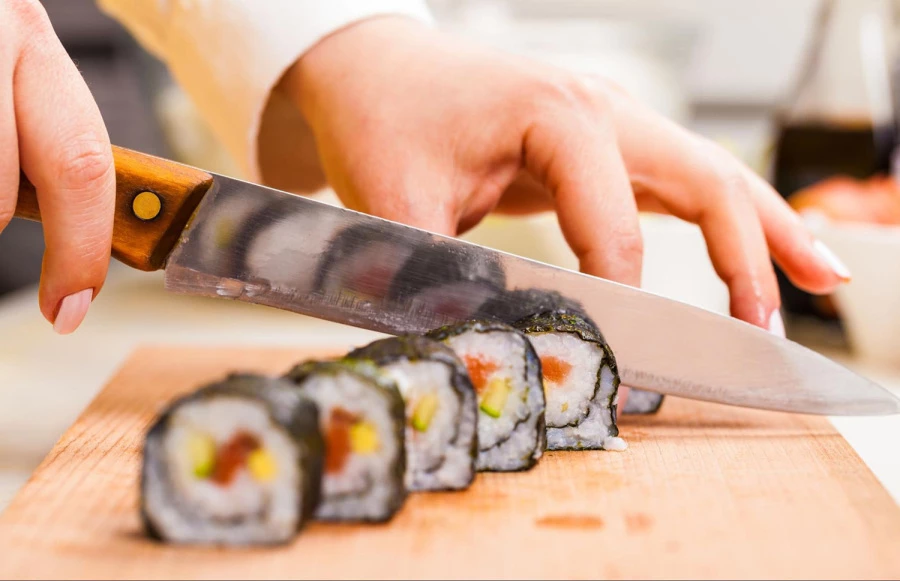
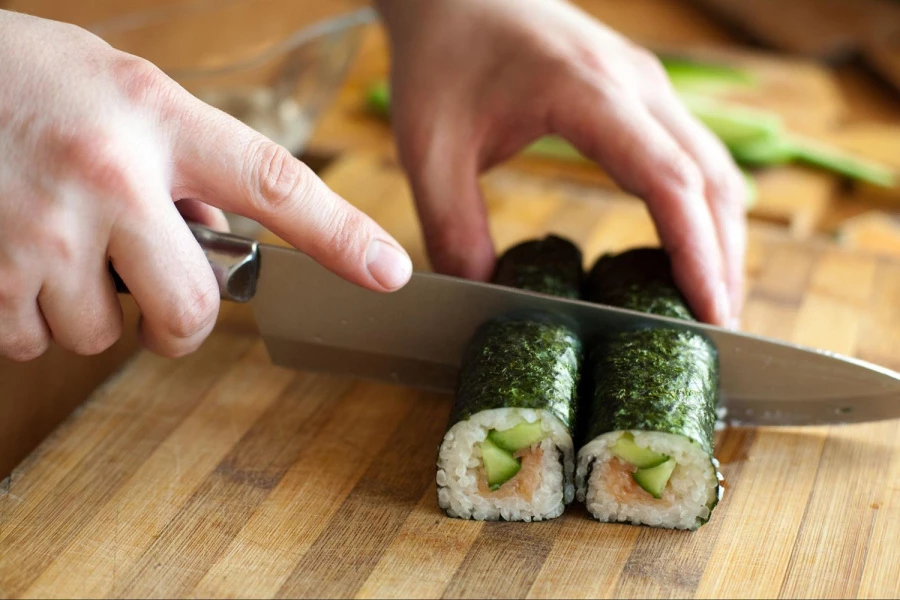
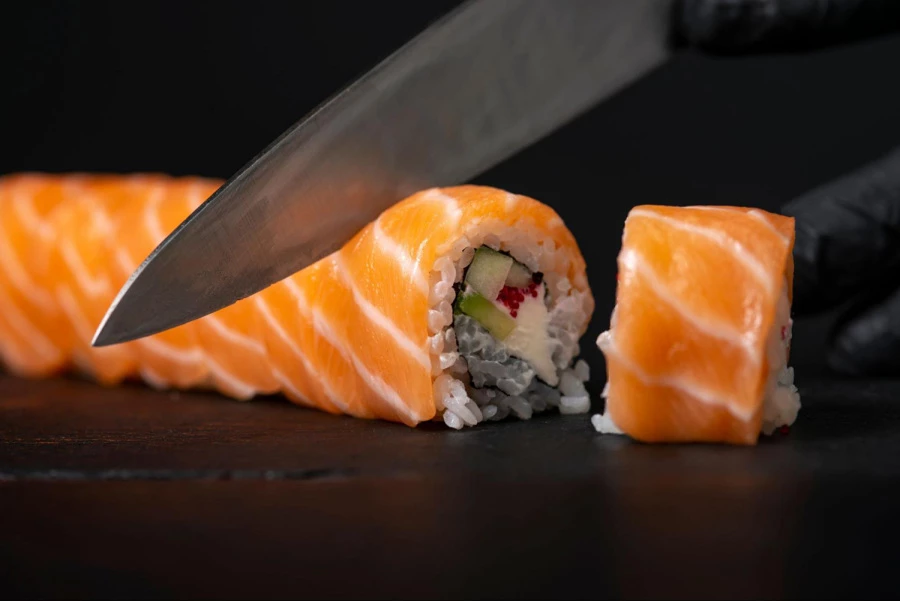
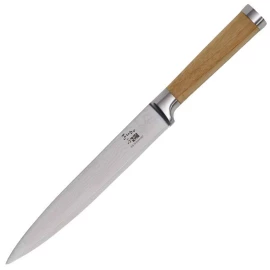
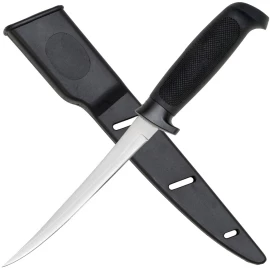
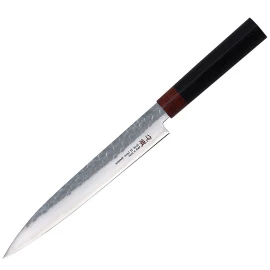
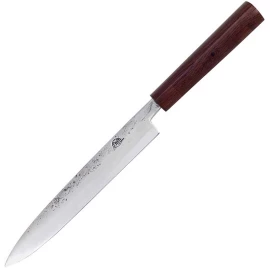
Comments